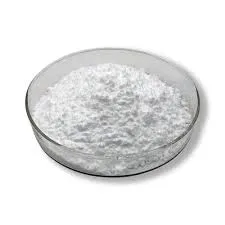
אוק . 12, 2024 07:28 Back to list
hpmc viscosity
Understanding HPMC Viscosity Properties and Applications
Hydroxypropyl Methylcellulose (HPMC) is a widely used non-ionic, water-soluble polymer derived from natural cellulose. Among its key characteristics, viscosity stands out as a crucial property that influences its performance in various applications. HPMC viscosity is a significant parameter in industries such as pharmaceuticals, food production, and construction, where it plays an essential role in product formulation and functionality.
Understanding HPMC Viscosity Properties and Applications
In pharmaceuticals, HPMC is widely used in drug delivery systems, particularly for controlled-release formulations. The viscosity of HPMC solutions affects the rate at which a drug is released from a tablet or capsule. Higher-viscosity HPMC tends to form a gel-like structure upon hydration, which can slow down the diffusion of active pharmaceutical ingredients, thereby prolonging their therapeutic effect. Consequently, selecting the appropriate viscosity grade of HPMC is essential for achieving the desired release profile in pharmaceutical products.
hpmc viscosity

In the food industry, HPMC serves multiple functions, including emulsification, thickening, and stabilization of food products. The viscosity of HPMC influences the texture and mouthfeel of food items, making it an important ingredient in sauces, dressings, and dairy products. For instance, a thickened sauce with the right viscosity can enhance sensory attributes, providing a better consumer experience. Therefore, understanding how to effectively manipulate HPMC viscosity is critical for food technologists aiming to create products that meet both taste and stability requirements.
In construction, HPMC is incorporated into mortars, plasters, and adhesives. Its viscosity contributes to the workability and adhesion properties of these materials. A higher viscosity can improve the hold and stability of applied materials, resulting in better bonding strengths. This characteristic is vital for ensuring the durability of construction applications, particularly in demanding environments.
Moreover, the viscosity of HPMC can be influenced by temperature and shear rate, making it essential for manufacturers to consider these factors during processing and application. The ability of HPMC to form gels and its sheer-thinning behavior are qualities that enhance its utility across diverse fields.
In summary, HPMC viscosity is a vital property that determines the performance and efficacy of HPMC in industry applications. Its influence spans from the stability and release of pharmaceuticals to the texture of food products, as well as the workability of construction materials. By understanding and manipulating HPMC viscosity, formulators can design products that not only meet but exceed consumer expectations. As research continues to advance, the potential for innovative applications of HPMC will undoubtedly expand, further solidifying its importance in various sectors.
-
Unlocking the Benefits of HPMC Products: A Gateway to Versatile Applications
NewsAug.07,2025
-
Unleashing the Potential of HPMC Ashland: A Comprehensive Look
NewsAug.07,2025
-
Tile Bonding Cellulose: The Key to Superior Adhesion and Durability
NewsAug.07,2025
-
Hydroxypropyl Methylcellulose Powder: The Versatile Component in Modern Pharmaceuticals
NewsAug.07,2025
-
Hydroxyethyl Cellulose: The Versatile Solution for Various Industries
NewsAug.07,2025
-
Hydroxyethyl Cellulose (HEC): The Versatile Polymer for Various Applications
NewsAug.07,2025







